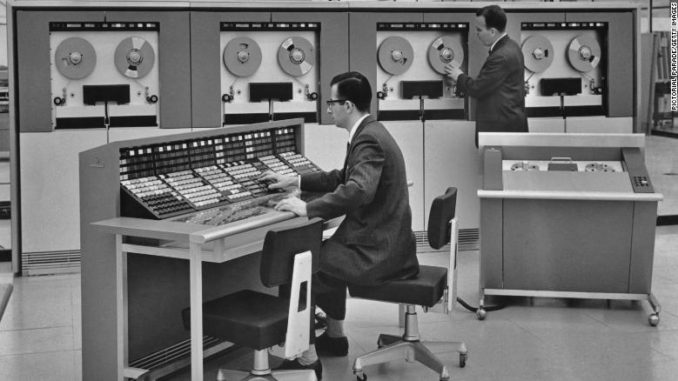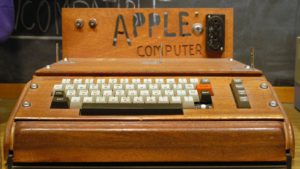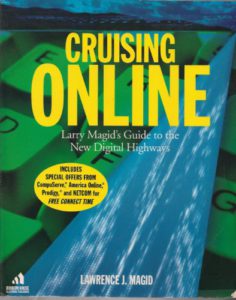
By Larry Magid
This post first appeared in the Mercury News
Listen to “Computing Has Gone Full Circle, and It’s Time to Go Back a Bit” on Spreaker.
With a little help from John Lennon, Larry makes the point in this 1-minute CBS News ConnectSafely Report
My very first computer was a Cyber 70. I didn’t own it nor did I ever get within a few feet of it. It was a giant mainframe housed at the University of Massachusetts Amherst Graduate Research Center. I accessed it via a terminal located elsewhere on campus or in my apartment. What I was doing was called time sharing because — as one of many people accessing that mainframe — I was sharing its processing power with other users. The mainframe kept track of how much processing time I was using and — after I finished my doctoral dissertation — I got a bill for several thousand dollars for my share of that computing time, although I didn’t have to pay it because it was waived for graduate students.
As mainframe users go, I was late to the game. By the time I was in graduate school, it was at least possible for students to remotely access the campus computer. In the ’60s, you pretty much had to be or be working for a data scientist to access a research computer or be a bureaucrat in a large institution to access a mainframe that was being used to process bills, register university students, or help carry out the war in Vietnam. I came of age at a time when computers were seen mostly as a tool of the “man.” During a time when many of my generation were demanding “power to the people,” computers were used on us (some would say against us) but not by us. Indeed, one of the slogans from Berkeley student activists of the ’60s was “do not fold, spindle or mutilate,” which was actually printed on the bottom of the IBM punch cards that served as student registration cards.
The PC revolution

In 1975, a group of people started to gather in the Bay Area who turned out — in some ways — to be even more revolutionary than the student activists of the ’60s. These were the founders of the Homebrew Computer Club — some of whom were social justice activists — who started experimenting with and advocating for the use and development of small personal computers. Club members included Apple co-founder Steve Wozniak, former anti-war activist Fred Moore, Morrow Designs founder George Morrow and John Draper, who spent jail time for defrauding AT&T after developing a way to illegally make free long-distance calls by using the same tone emitted by a toy whistle packaged in boxes of Cap’n Crunch cereal. Draper, nick named “Cap’n Crunch,” and I crossed paths in 1981 when he wrote the code, and I wrote the manual for IBM’s EasyWriter word processing program. I later wrote a manual for one of George Morrow’s personal computers.
During those early years of personal computing, visionaries talked about how PC would free people from the shackles of big corporations, universities, and government agencies. They were seen as empowerment tools, and in many ways, they were and still are. As someone who spent many hours as an undergraduate activist using a mimeograph machine and megaphones to get the word out, I certainly appreciated the ability to create leaflets on a PC, and later, to communicate electronically. Today’s activists on both the left and the right are using social media as their mimeograph machines and megaphones. I wasn’t in the Bay Area during Homebrew, but I was an early adapter of online services having accessed computer bulletin boards and early online services starting around 1979 and later writing two early books on how to use PCs and modems to communicate.

Back to the ‘mainframe’
I’m writing this column on a remote computer, though I have no idea what type it is. It’s probably not a mainframe but it may as well be. Even though I’m accessing it from my home PC, the actual processing and data storage is taking place somewhere else. Like that terminal I used back in the late ’70s, my PC is functioning as an input/output device. The processing and data storage is taking place somewhere else.
The same is true when you do a Google search, access your email, check your calendar, prepare your taxes online, apply for medical insurance or anything else you do online these days. Now we call it cloud computing instead of time sharing, but it’s the same principal. There’s even the acronym “SaaS,” which stands for Software as a Service. Many companies these days do their accounting, inventory management, scheduling and nearly all of their other computer tasks via cloud services that host their software and store their data.
The same is true for your smartphone. Yes, it has storage, memory, and a fair amount of processing power, but most of the apps you use are connected to servers that do the actual work. Your phone is basically a portable computer terminal connected via the cellular network or Wi-Fi to big machines located elsewhere that are typically owned by big companies. Smartphones are a throw-back in yet another way. Like early PCs, before the advent of the browser, nearly every application requires its own software program which we call an app. But that’s fodder for another column.
Rekindle the PC pioneer spirit
I’m not itching to get back to the days of standalone personal computing, but it may be time to rekindle the spirit of those early PC pioneers and start thinking about how we can use technology to unshackle ourselves from giant institutions like those that control social media, search and online commerce. I’m not calling for the abolition of big players, but I do think it’s time to hold them more accountable to the people whose lives they impact. Dare I say, “Power to the People?”
Disclosure: Larry Magid is CEO of ConnectSafely.org which receives financial support from Facebook, Google, Amazon and other tech companies who he’s arguing here, need to be more accountable.